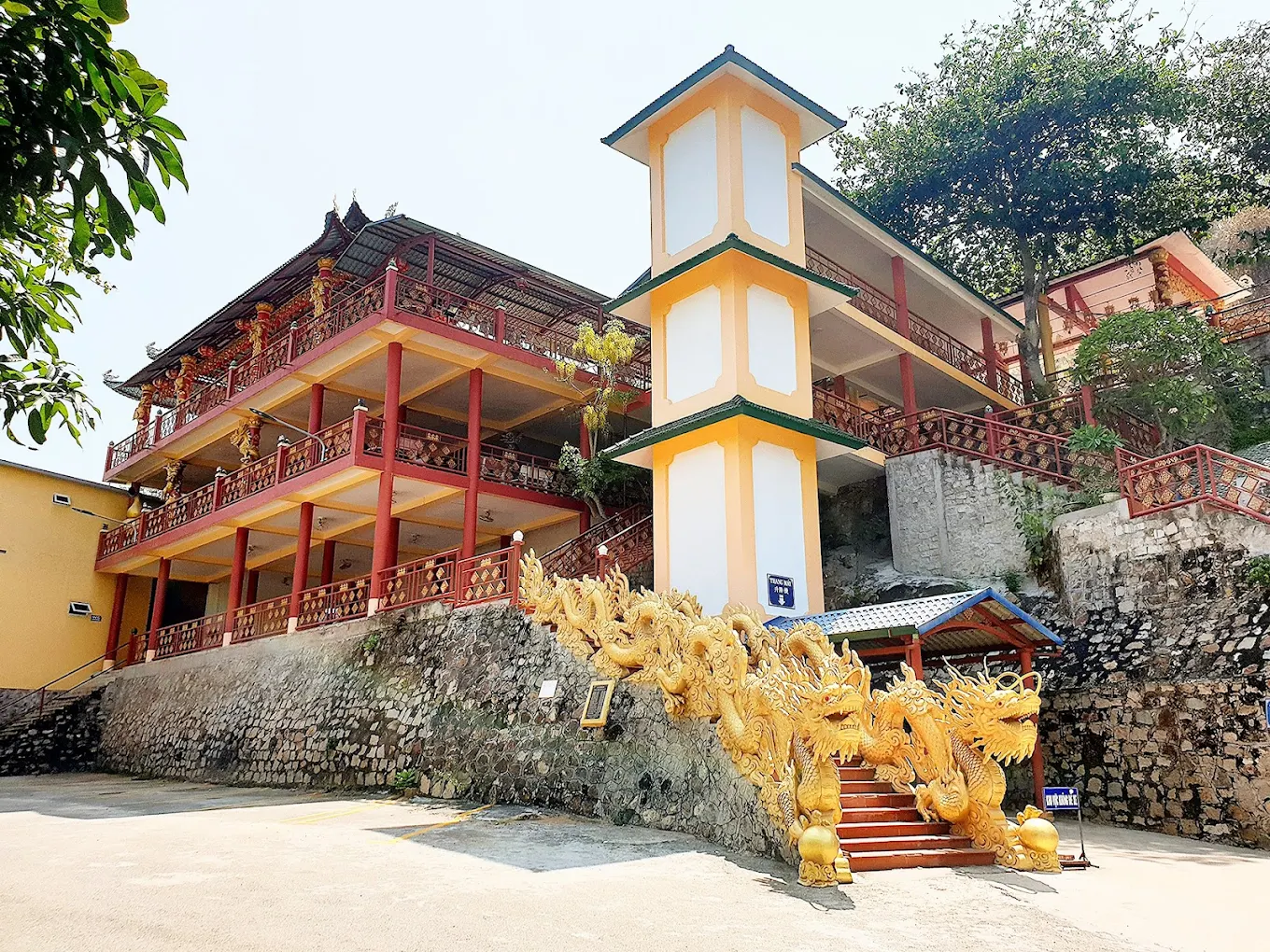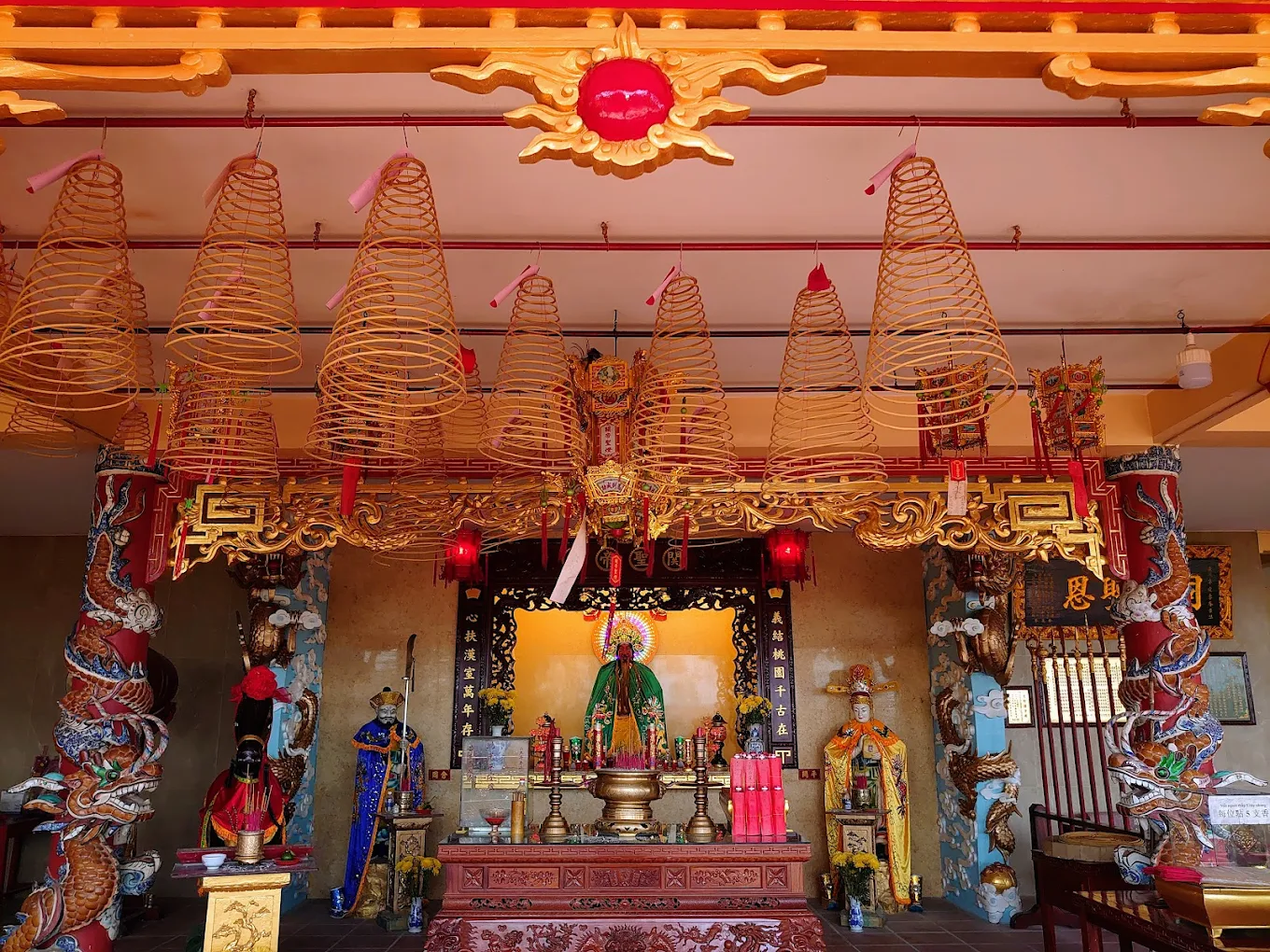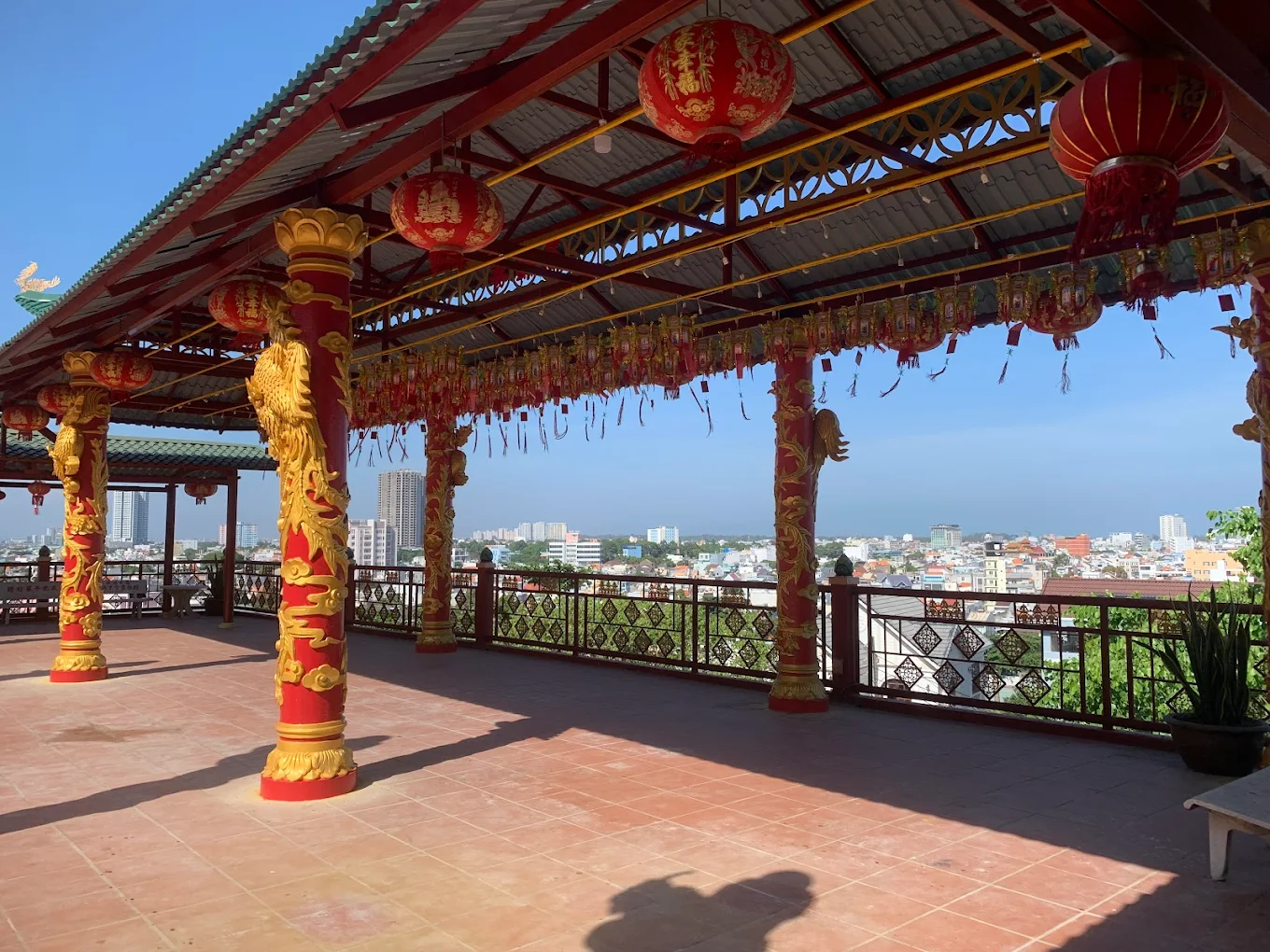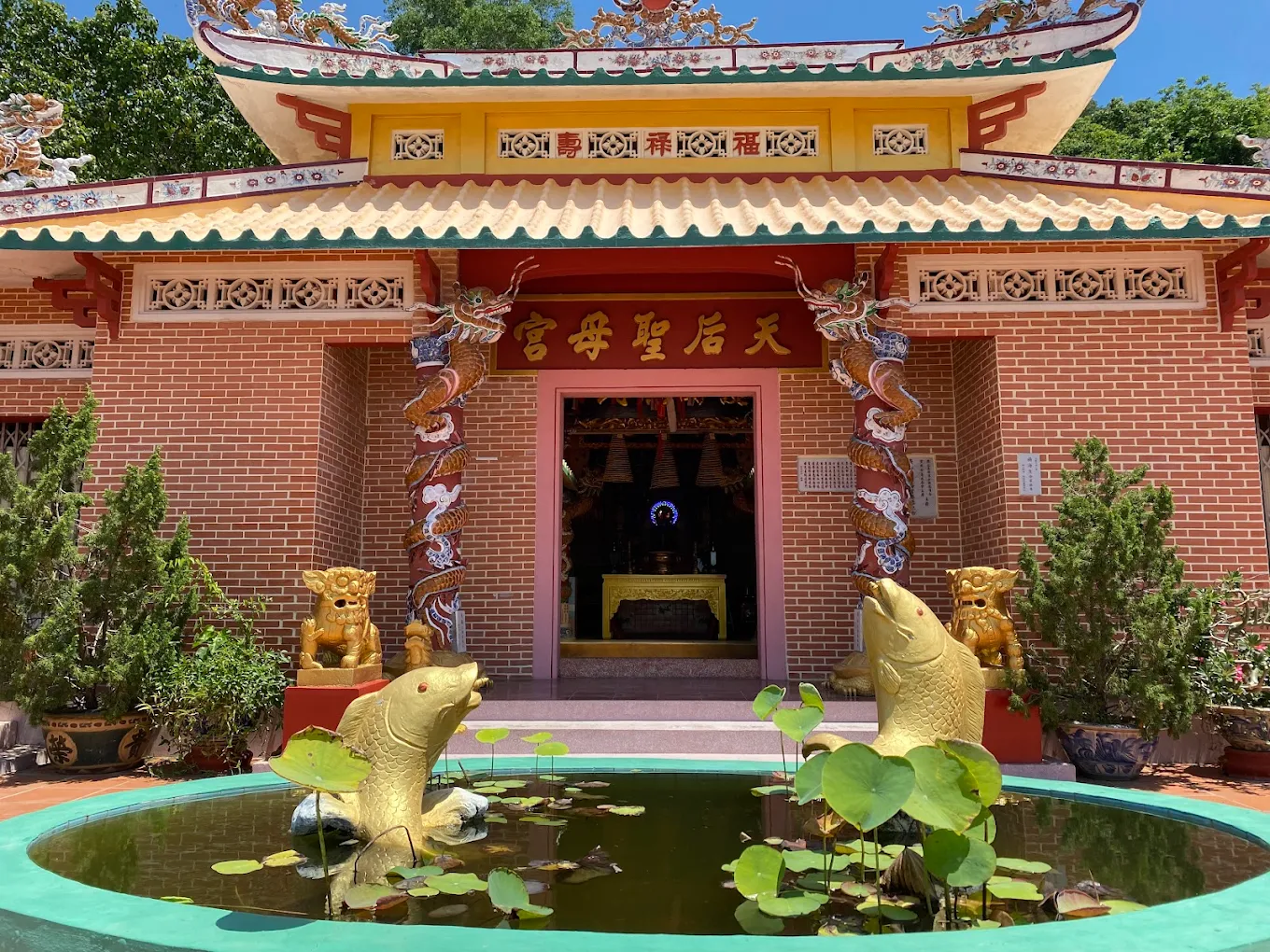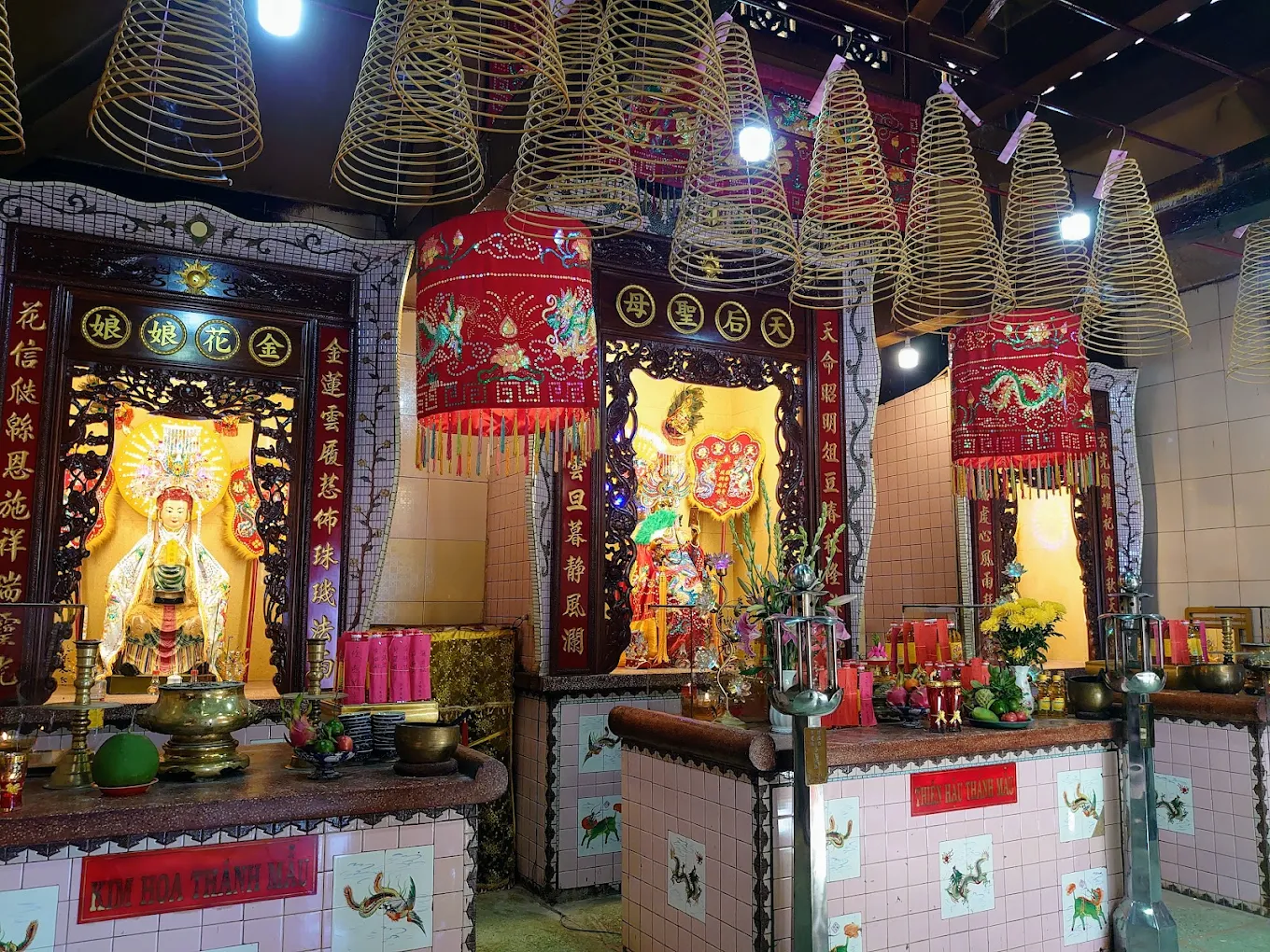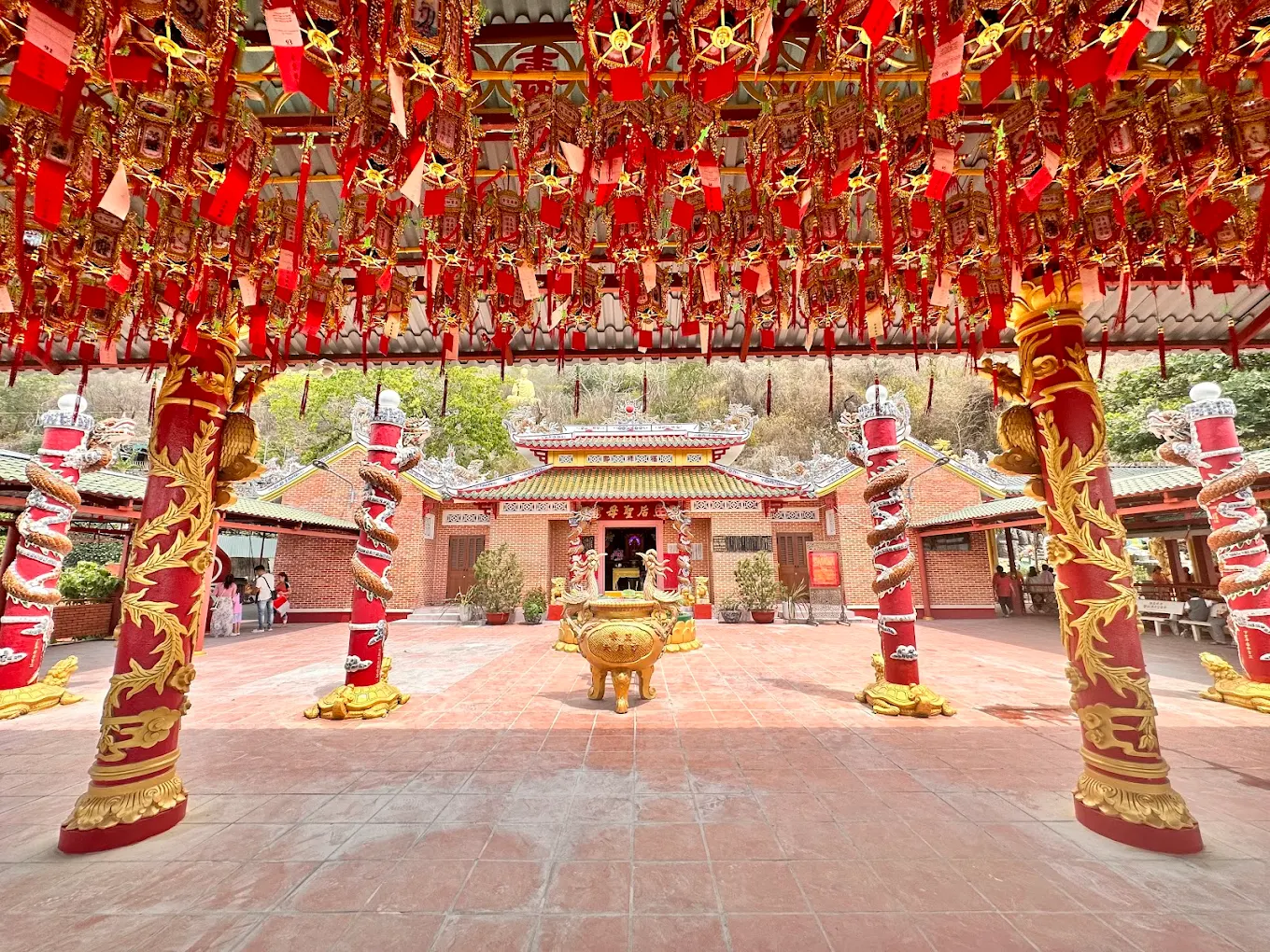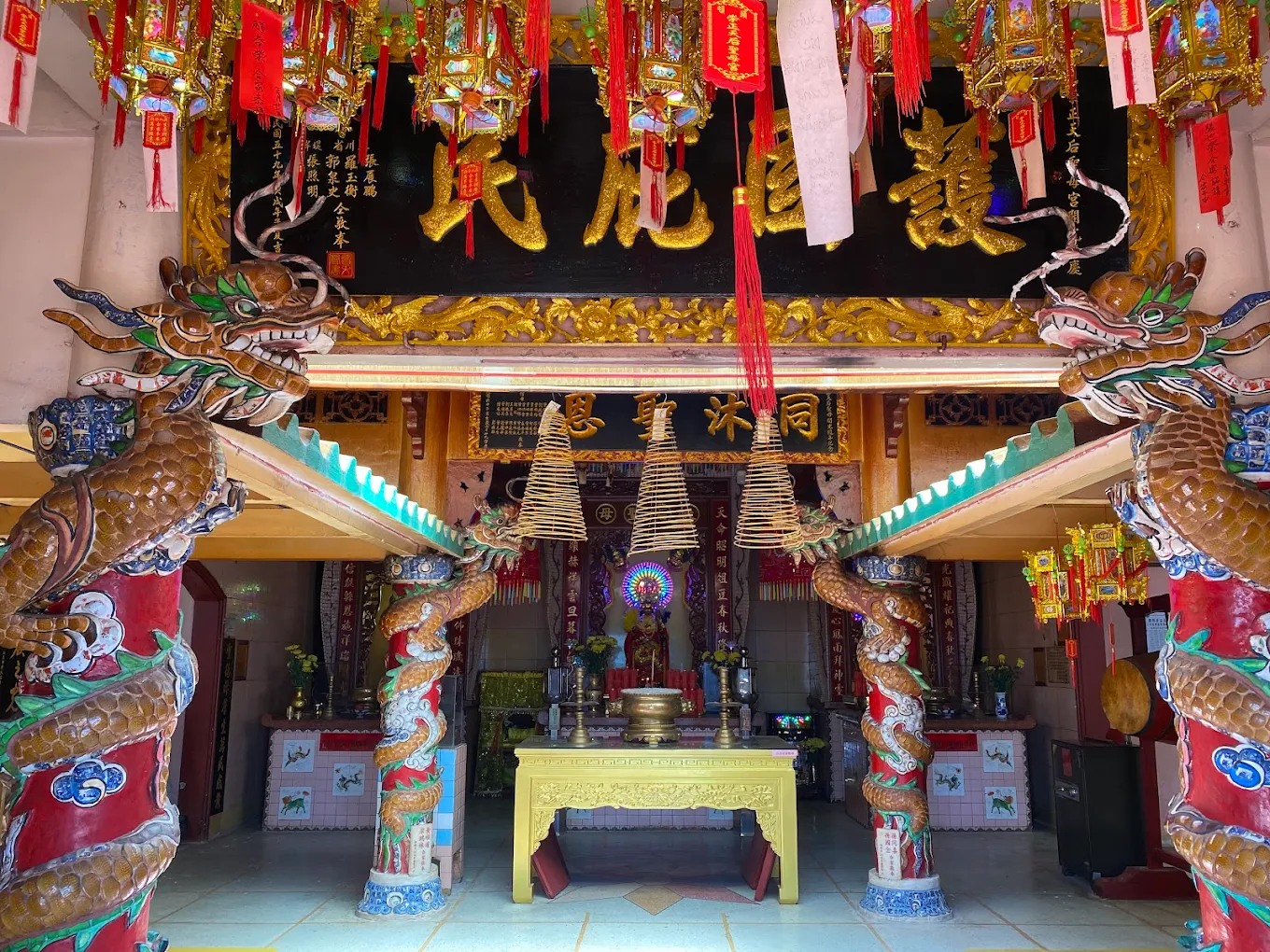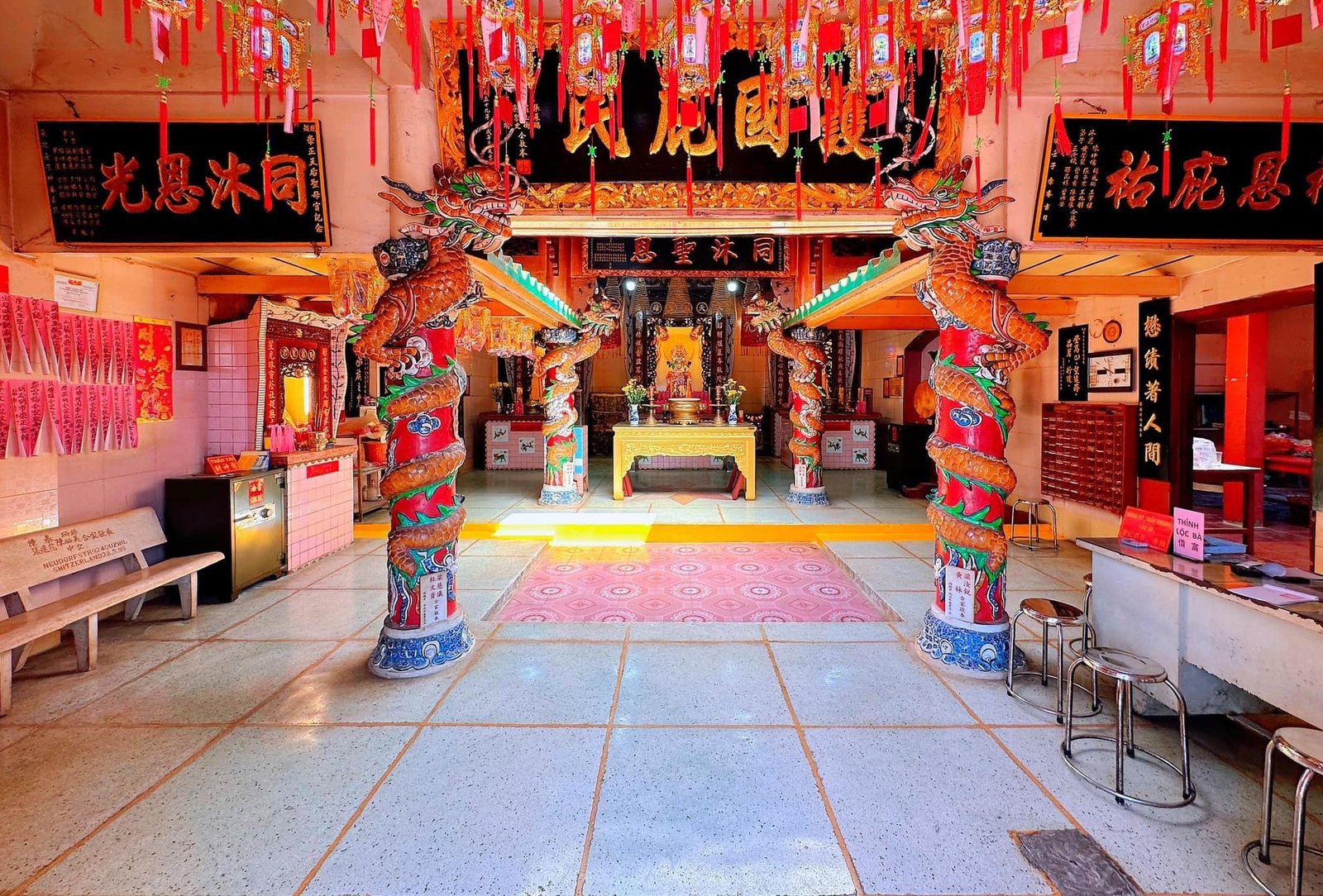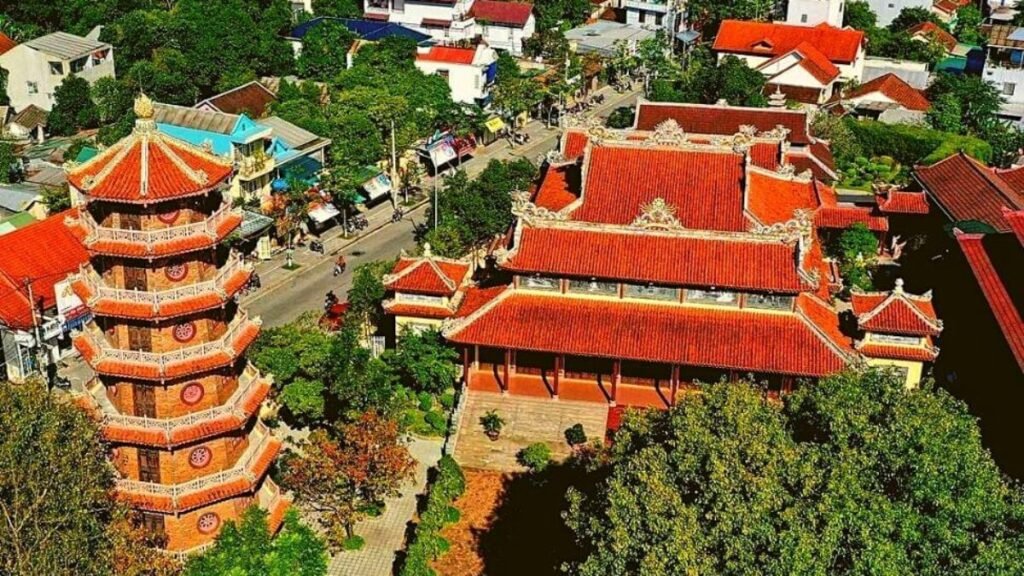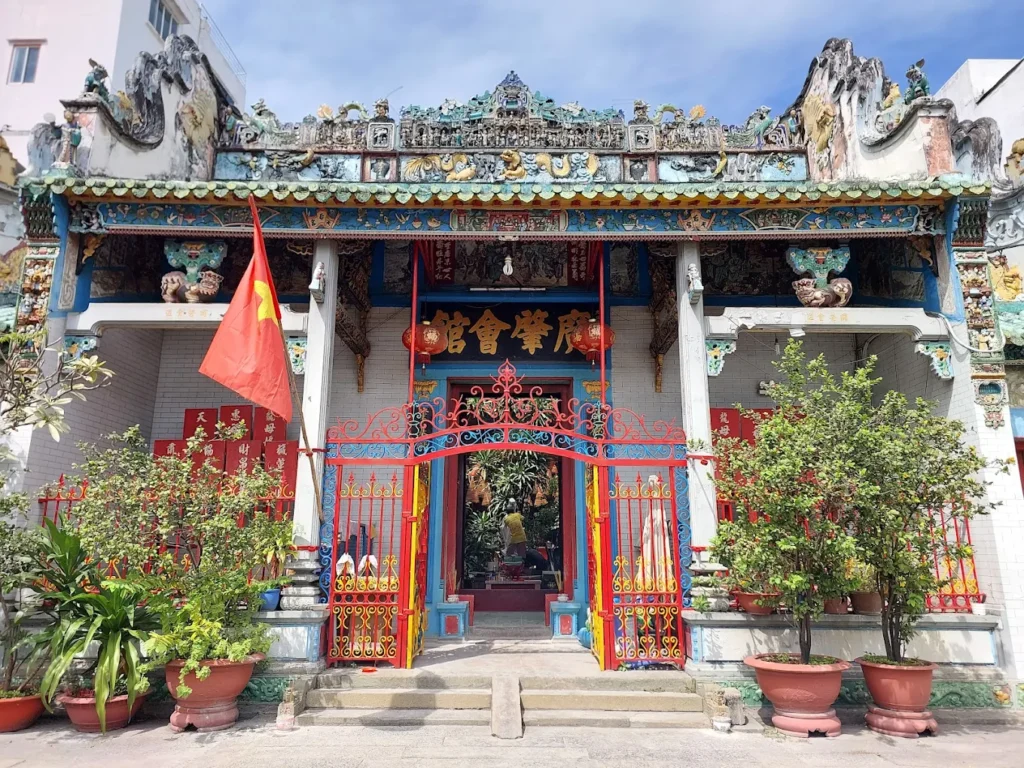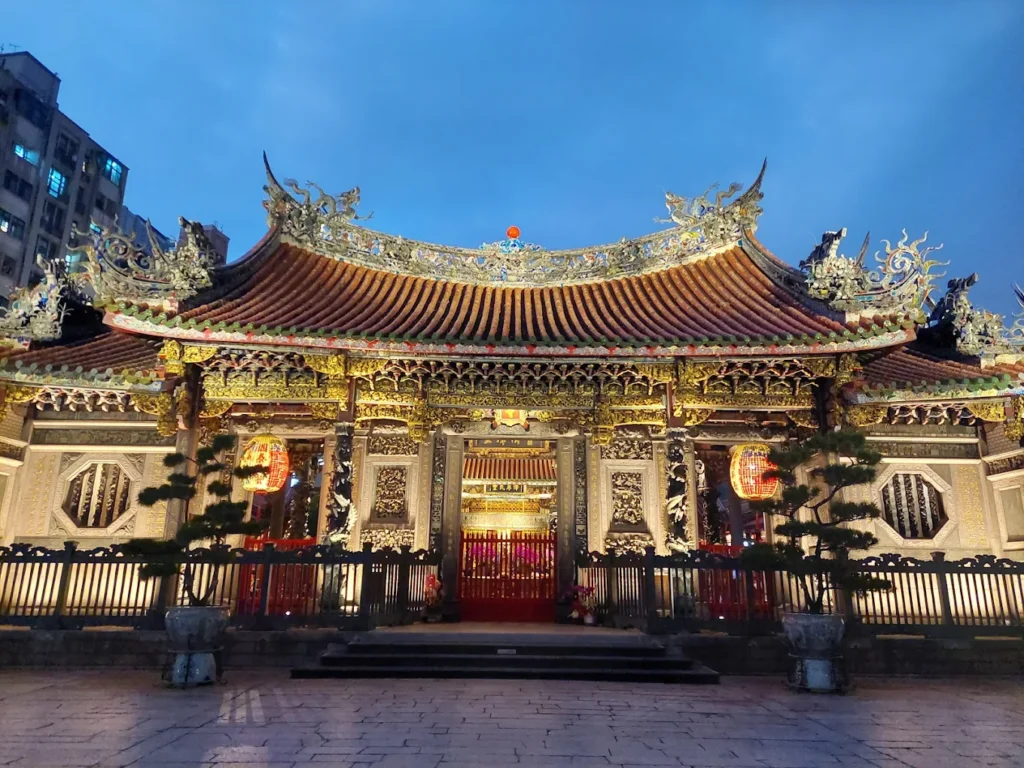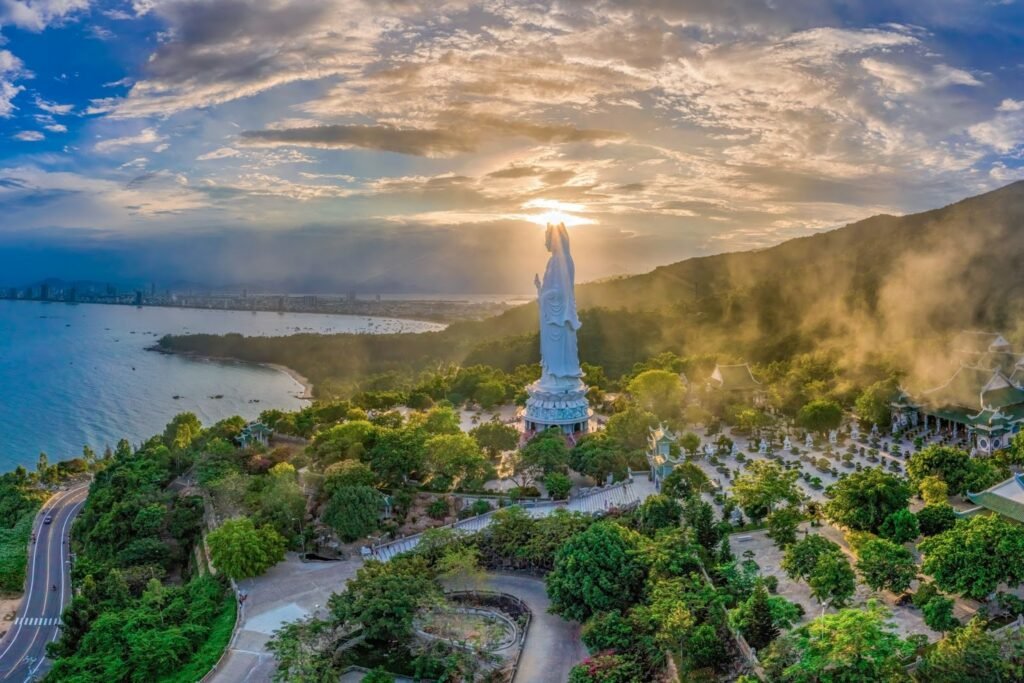Sùng Chính Pagoda: The Maritime Sanctuary of Vũng Tàu’s Taoist Devotion
As dawn breaks over Vũng Tàu’s Núi Lớn, wisps of sandalwood incense curl through Sùng Chính Pagoda, a haven of Taoist reverence. In the main hall (chánh điện), devotees kneel before the golden statue of Thiên Hậu Thánh Mẫu, the Heavenly Empress, her serene gaze illuminated by oil lamps. The soft chant of Taoist scriptures weaves with the distant murmur of waves, anchoring this coastal sanctuary in maritime tradition. Built by the ethnic Chinese community of Vietnam, known as Hoa (người Hoa), the pagoda’s crimson-and-gold façade stands as a testament to their enduring faith. Offerings of fruit and joss sticks honor Thiên Hậu, the protector of seafarers, whose legend resonates with Vũng Tàu’s port life. From its hillside vantage, the pagoda overlooks the shimmering coastline, blending spiritual devotion with the rhythm of the sea. This sacred space beckons visitors to explore a vibrant tapestry of cultural and spiritual heritage.
Waves of Faith: Overview and Significance
Introduction to Sùng Chính Pagoda
Sùng Chính Pagoda, nestled on Núi Lớn in Vũng Tàu, is a radiant Taoist temple dedicated to Thiên Hậu Thánh Mẫu, the Heavenly Empress revered for safeguarding seafarers. Locally known as Miếu Bà Sùng Chính, it fuses Chinese Taoist traditions with Vietnam’s coastal spirituality, offering a tranquil retreat amid Vũng Tàu’s bustling port city. Its vivid red-and-gold architecture and sweeping coastal views captivate spiritual seekers and cultural explorers. A cornerstone of the ethnic Chinese (Hoa) community’s identity, the pagoda pulses with offerings that celebrate its maritime heritage.
Historical Journey
- Founding (1969): Established by Vũng Tàu’s ethnic Chinese community, the pagoda began as a humble shrine to Thiên Hậu, addressing the diaspora’s spiritual needs, as documented in temple archives.
- Growth (1980s): Donations from ethnic Chinese across southern Vietnam expanded it into a grand structure with ornate woodwork, per community records.
- Maritime Role: Its rise paralleled Vũng Tàu’s growth as a port hub, reinforcing its status as a guardian of fishermen, rooted in Chinese coastal traditions.
- Heritage Status (2020): Recognized by local authorities as a cultural site, ensuring its preservation, per Bà Rịa-Vũng Tàu tourism reports.
Cultural Significance
- Ethnic Chinese Heritage: The pagoda preserves Chinese Taoist practices, such as incense offerings and lunar rites, for Vũng Tàu’s Hoa community of Chinese origin.
- Thiên Hậu’s Legacy: Canonized in 1110 by China’s Song Dynasty, Thiên Hậu, born as Lin Mo in Fujian, is venerated for saving seafarers, per Taoist texts.
- Syncretic Traditions: It blends Taoist rituals with Vietnamese folk beliefs, seen in offerings to Thiên Hậu and local deities, as noted in community accounts.
- Regional Impact: Its festivals unite devotees from Bà Rịa-Vũng Tàu and beyond, fostering cultural exchange, per 2024 local news.
Unique Legacy
- Thiên Hậu’s Tale: The pagoda centers on Thiên Hậu’s legend of rescuing her brothers during a storm, mirroring Vũng Tàu’s maritime perils, verified by temple chronicles.
- Community Strength: Funded entirely by ethnic Chinese donations, it showcases diaspora resilience, per temple donation logs.
- Coastal Symbolism: Perched 50 meters above sea level on Núi Lớn, it offers port views that tie spiritual reverence to daily life.
- Enduring Tradition: Rituals like lantern offerings have persisted since 1969, per temple records.
Community and Global Impact
- Local Ties: The pagoda hosts ethnic Chinese events, like lunar new year celebrations, strengthening community bonds, per community records.
- Diaspora Links: Ethnic Chinese from Ho Chi Minh City and abroad visit during festivals, supporting maintenance, as seen in 2024 donation logs.
- Global Appeal: Recognized by tourism boards, it draws thousands seeking Taoist heritage, per 2024 visitor data.
- Cultural Harmony: Shared festivals with Kinh (Vietnamese) communities foster dialogue, per local media.
Crafted for Divinity: Architectural and Spiritual Features
Iconic Design
Sùng Chính Pagoda’s Chinese Taoist aesthetic gleams with a red-and-gold façade, symbolizing prosperity and divine favor. Its courtyard layout, centered on the main hall, follows traditional designs, verified by temple blueprints. Curved roofs adorned with ceramic dragons echo Fujianese influences, as confirmed by ethnic Chinese elders. Elevated on Núi Lớn, the pagoda frames Vũng Tàu’s coastline, enhancing its spiritual allure.
Key Structures
- Main Hall (Chánh Điện): The spiritual core, housing Thiên Hậu’s statue, features crimson pillars and frescoes of Taoist deities.
- Courtyard: A peaceful space with stone incense burners for communal rites, observed in 2024 festival reports.
- Side Shrines: Dedicated to deities like Tài Bạch (God of Wealth), these hold smaller altars, per temple guides.
- Bell Tower: A simple structure with a bronze bell, rung during ceremonies, noted in community accounts.
Worshipped Statues
- Thiên Hậu Thánh Mẫu: The 2-meter golden statue, crafted in 1975, depicts Thiên Hậu in flowing robes, clutching a scroll of wisdom. Its jade accents and calm expression embody her role as a maritime protector, per Taoist iconography texts.
- Secondary Deities: Sandalwood statues of Tài Bạch and Quan Công (God of War) flank the main altar, each with distinct attire, per caretakers’ descriptions.
- Spiritual Significance: Devotees offer incense to Thiên Hậu for safe voyages, tied to her Fujianese legend, verified by ritual logs.
Materials and Techniques
- Construction: Built with red brick and teak using Chinese joinery, as noted in 1980s renovation records.
- Artistry: Frescoes and carvings by ethnic Chinese artisans from Chợ Lớn depict Taoist myths with lacquer finishes, per community interviews.
- Cultural Roots: Fujianese-style ceramics and dragon motifs reflect ethnic Chinese heritage, distinct from Vietnamese Buddhist designs, per architectural studies.
Signature Elements
- Thiên Hậu Altar: The gilded altar, etched with lotus motifs, anchors the pagoda’s maritime devotion, as seen in festival photos.
- Coastal Terrace: A platform offering port views symbolizes Thiên Hậu’s vigilance, noted in visitor guides.
- Dragon Friezes: Ceramic roof dragons, denoting power, are a Fujianese hallmark, per academic texts.
Lesser-Known Features
- Inscriptions: Stone tablets in the courtyard list 1969 donors in Chinese calligraphy, per temple archives.
- Hidden Shrine: A small alcove for the Earth God, used for land blessings, often overlooked, per caretakers.
- Historic Lanterns: 1970s red lanterns, hung during festivals, add nostalgic charm, per community records.
Preservation and Evolution
- Restoration (2015): Roof repairs preserved ceramic dragons, funded by ethnic Chinese donations, per temple logs.
- Challenges: Coastal humidity threatens woodwork, mitigated by annual lacquer treatments, per caretakers.
- Modern Touches: Solar lighting, added in 2023, enhances evening visits, per tourism board updates.
Rites of the Sea: Rituals and Practices
Daily Sacred Rites
- Morning Offerings: Devotees light joss sticks and offer fruit to Thiên Hậu’s statue, praying for safe voyages, observed daily in 2024.
- Chanting: Taoist priests recite scriptures (kinh) at dawn, seeking blessings, per ritual schedules.
- Incense Rituals: Sandalwood incense purifies the main hall continuously, verified by temple guides.
Unique Practices
- Seafarer Blessings: Fishermen offer miniature boats to Thiên Hậu for protection, a coastal Taoist custom, per community accounts.
- Lunar Rites: On the 1st and 15th lunar days, devotees kowtow before the altar for prosperity, per festival reports.
- Signature Ritual: Boat offerings tie to the pagoda’s maritime devotion, honoring Thiên Hậu, verified by temple records.
Festival Traditions
- Thiên Hậu Festival (23rd day, 3rd lunar month): Dragon dances, lantern processions, and offerings to Thiên Hậu draw thousands, per 2024 news.
- Mid-Autumn Festival: Mooncake offerings and prayers emphasize unity, per temple logs.
- Statue Veneration: Thiên Hậu’s statue is draped in silk robes during festivals, symbolizing reverence, per ritual records.
Visitor Engagement
- Accessible Rites: Visitors can light incense or join morning chants, guided by priests, per visitor guides.
- Offerings: Fruit baskets or joss sticks, available at the entrance, allow participation in Thiên Hậu worship, per caretakers.
- Cultural Etiquette: Bow three times before the altar, a Taoist practice, verified by ethnic Chinese elders.
Spiritual Community Roles
- Priests: Taoist clergy lead rituals and tend Thiên Hậu’s altar, per temple schedules.
- Devotees: Ethnic Chinese volunteers organize festivals, preserving traditions, per community records.
- Statue Care: Daily cleaning of Thiên Hậu’s statue reflects devotion, noted by caretakers.
Charting the Visit: Visitor Information
Navigating to Sùng Chính Pagoda
- Location: On Núi Lớn, a 10-minute drive from Vũng Tàu’s city center via winding roads, per tourism maps.
- Landmarks: Near Núi Lớn Cable Car Station, with Vietnamese and English signage, verified by 2024 visitor guides.
- Routes: Taxis or motorbikes from Bãi Sau Beach are ideal, with parking available, per local transport data.
Address of Sùng Chính Pagoda
- Vietnamese: Chùa Sùng Chính, Đường Núi Lớn, Phường 2, Thành phố Vũng Tàu, Tỉnh Bà Rịa-Vũng Tàu.
- English: Sùng Chính Pagoda, Núi Lớn Road, Ward 2, Vũng Tàu City, Bà Rịa-Vũng Tàu Province.
- Verification: Confirmed via temple signage and tourism board records.
Visiting Hours and Etiquette
- Hours: Open daily, 6:00 AM–6:00 PM, with extended festival hours, per temple notices.
- Etiquette: Remove shoes before the main hall, avoid pointing at statues, and dress modestly, per caretakers.
- Taoist Custom: Offer incense with both hands and bow to Thiên Hậu, verified by ethnic Chinese elders.
Accessibility and Safety
- Mobility: Steep stairs to the main hall may challenge those with mobility issues; no ramps available, per 2024 visitor feedback.
- Safety: Lit paths and festival security ensure safety, with police presence, per tourism reports.
- Tips: Wear sturdy shoes for hillside terrain, per guides.
Amenities and Surroundings
- Facilities: Restrooms and a shop selling incense and offerings are available, per temple records.
- Nearby: Núi Lớn Cable Car and Bãi Sau Beach, within 3 km, offer scenic options, per tourism maps.
- Dining: Seafood stalls on Trần Phú Street, 2 km away, provide affordable meals, per visitor guides.
Immersive Visitor Tips
- Best Timing: Visit at dawn for quiet chants and sparse crowds, per caretakers.
- Sensory Moments: Inhale sandalwood incense and hear the bronze bell, tied to maritime devotion, per festival reports.
- Statue Connection: Offer joss sticks to Thiên Hậu and admire her silk robes, deepening spiritual engagement, per ritual guides.
- Festival Planning: Attend the Thiên Hậu Festival for dragon dances, per 2024 event schedules.
